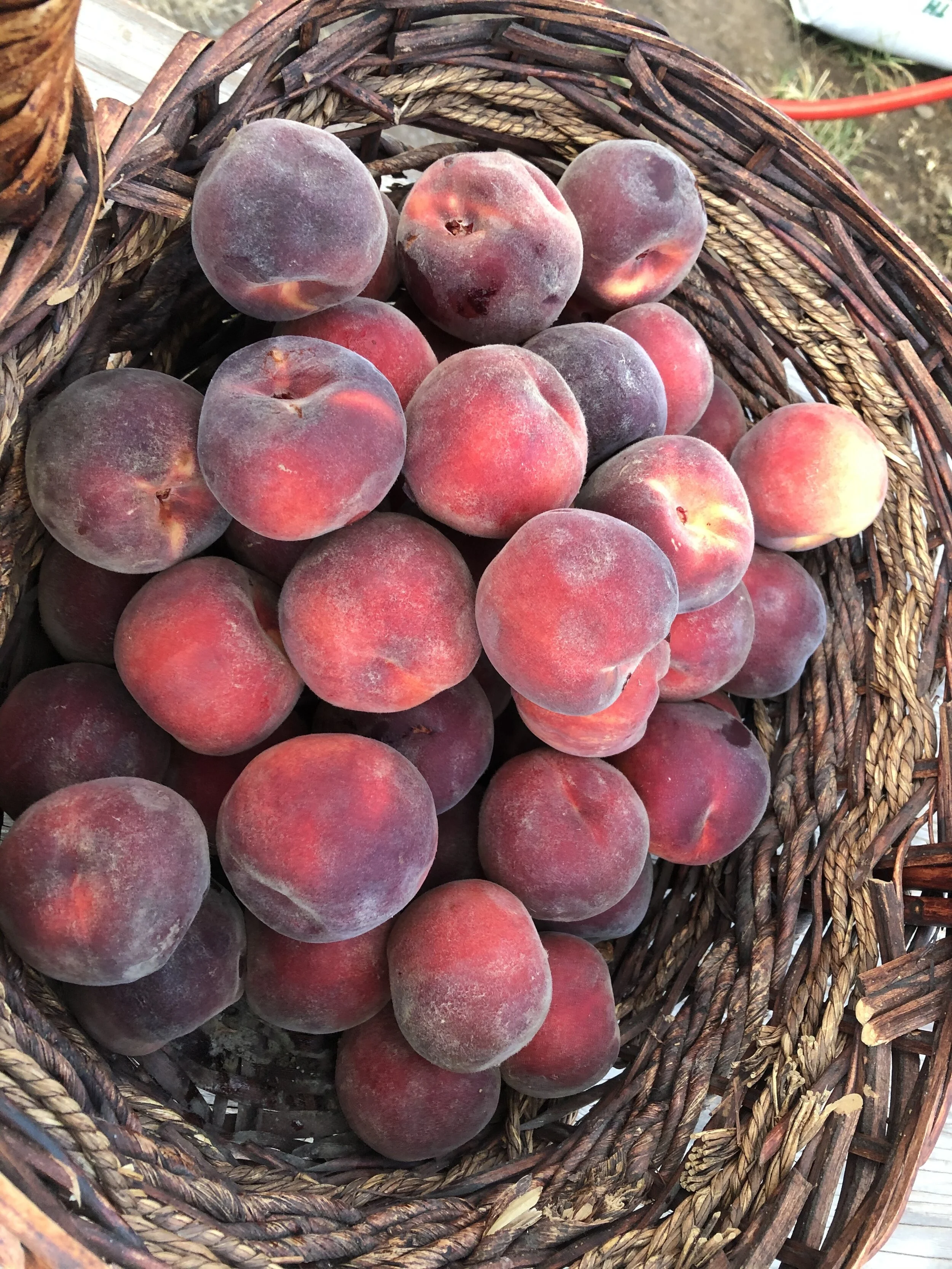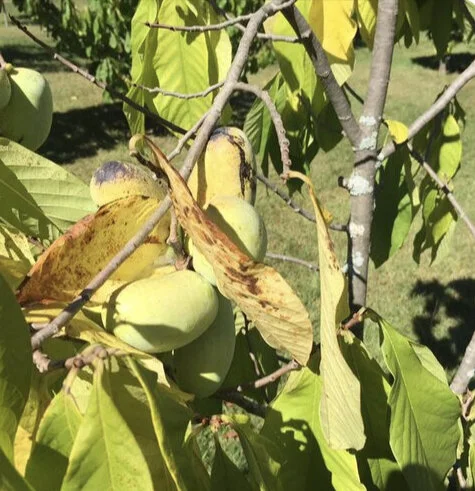Pawpaw seedling
Pawpaw seedling
These seedlings were grown from seed harvested out of fruits from either Neil Peterson’s varieties or the KSU breeding program varieties. I plant and grow these at my farm and am very excited to be haphazardly breeding these trees with excellent genetics in the mix.
Asimina triloba has the claim to fame of being the largest fruit native to North America. With the added caveats that the fruit be edible and extant, I would have to agree. The trees can grow in moderate to deep shade and still fruit. They can also grow in full sun, they just don’t like moving from shade to sun quickly. I have established orchards in full sun with no losses. About 5% of trees seem to mysteriously die within their first 5 years of life - I can not determine the cause.
Pawpaw is tolerant of juglone, so you can plant them in the shade of walnuts where little else would be happy. They are a floodplain tree and so can tolerate seasonal temporary inundation followed by long dry stretches especially if in shade.
About the edibility of pawpaw - there is an important issue to discuss here. Please be aware that plants in the genus Asimina have a very different chemistry than most other fruits. Parts of the pawpaw tree, the bark and roots, contain anti-cancer compounds. The fruits, however, contain a neurotoxin. Annonacin is in the fruits in concentrations that won’t hurt you, as long as you eat the fruits sparingly. This is not a fruit to gorge on as one may do with apples or peaches that have a simpler chemistry profile of sugars, starches, fibers, and other friendly compounds. When pawpaws soften and turn ripe, eat them before the skin turns dark brown. When they develop the burned brown or purple look, they contain higher concentrations of annonacin. Overconsumption of these compounds can cause neurodegenerative diseases.
Now that I have scared everyone, here is the good news: eating a number of these fruits in the fall is healthy and delicious! Just don’t overdo it! Also, in cases where overconsumption of Asimina fruits has resulted in neurological problems, the cessation of consumption was all that was needed to reverse the pathology. They don’t have lasting effects as far as I’m aware.
The long and the short of it is, eat a few fruits in the fall and enjoy them! Then move on to something else, like the wild animals do.


